How can i tell if pearls are real? This is a very common situation. At Xinye Pearls, we receive questions like this every day from customers who want to make sure they are investing in real pearls, not imitations.
Whether you’ve inherited your grandmother’s pearls or you’ve scored a bargain at your own local market, knowing how to identify authentic pearls can save you from disappointment (and potentially save you a ton of money). Let’s take a look at the tried-and-true methods that actually work.
Why Does It Matter If Pearls Are Real?
Genuine pearls are valuable, last forever, give off unparalleled luster, and are collectible. What about fake pearls? They may look decent in dim light, but they won’t last, much less hold their value, and an experienced eye can tell the difference at a glance. With these 8 tips, you’ll never have to wonder “How can I tell if pearls are real?” again!
8 Quick Tips: How to Tell If Pearls Are Real
Real pearls will have variations in their shape, while fake pearls are often perfectly round. Rubbing two pearls gently against each other should create a slight abrasion on their surface. The weight of real pearls will feel heavier in your hand compared to fake pearls. Real pearls will have a gritty texture when rubbed against your teeth, while fake pearls will feel smooth. Additionally, authentic pearls will have a unique warmth when touched to your skin.
Tip 1. The Tooth Test
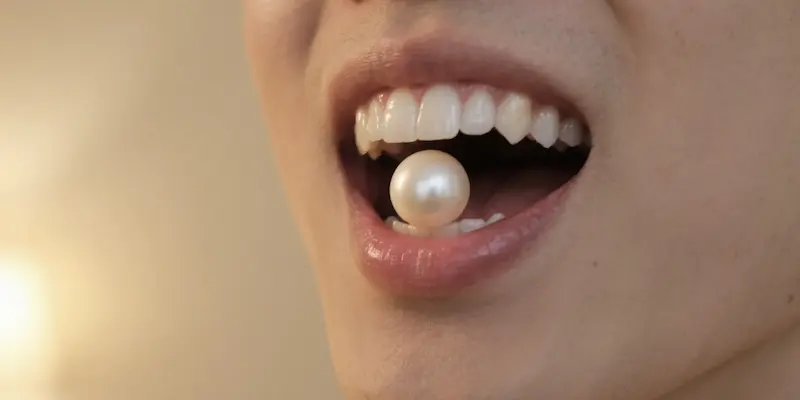
This may sound a little unbelievable, but it’s the most reliable quick test:
- Gently rub the pearl against your front teeth
- Real pearls feel gritty or sandy
- Fake pearls feel smooth as glass
The gritty feeling comes from the natural calcium carbonate layers in genuine pearls. Plastic or glass imitations simply can’t replicate this texture.
Pro tip: You need to clean your pearls before testing them first!
Tip 2. The Weight Test
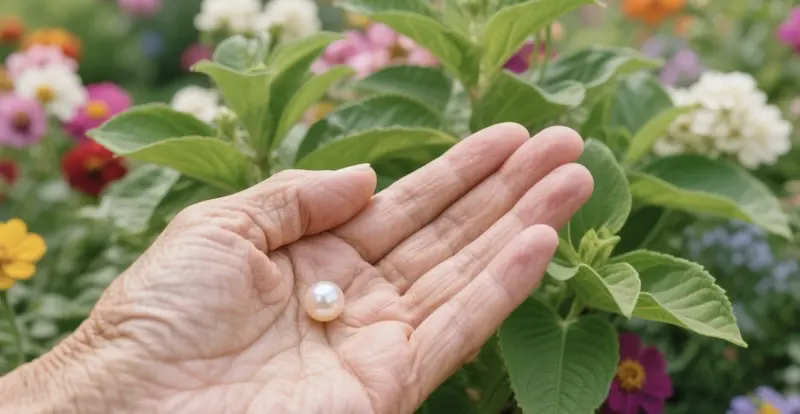
Pick up the pearls and feel its weight:
- Real pearls have a weighty feel – they feel heavy in your hand
- Fake pearls usually feel unnaturally light (plastic) or sometimes too heavy (heavy glass)
- Natural pearls should feel “just right” – not too light, not too heavy!
Tip 3. Check the Drilled Holes
Look carefully at the location of the drilled holes in the pearl:
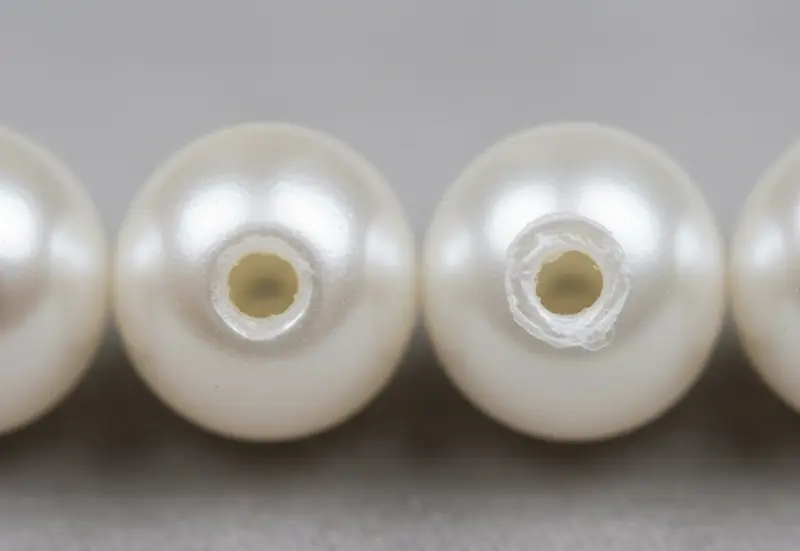
- Real pearls: Clean, precise holes with slight chipping around the edges (normal wear)
- Fake pearls: Paint or coating around the hole often flakes off, revealing plastic or glass underneath
The Visual Inspection: What Real Pearls Actually Look Like
Tip 4. Surface Imperfections Are Good News
Counter-intuitive, but true:
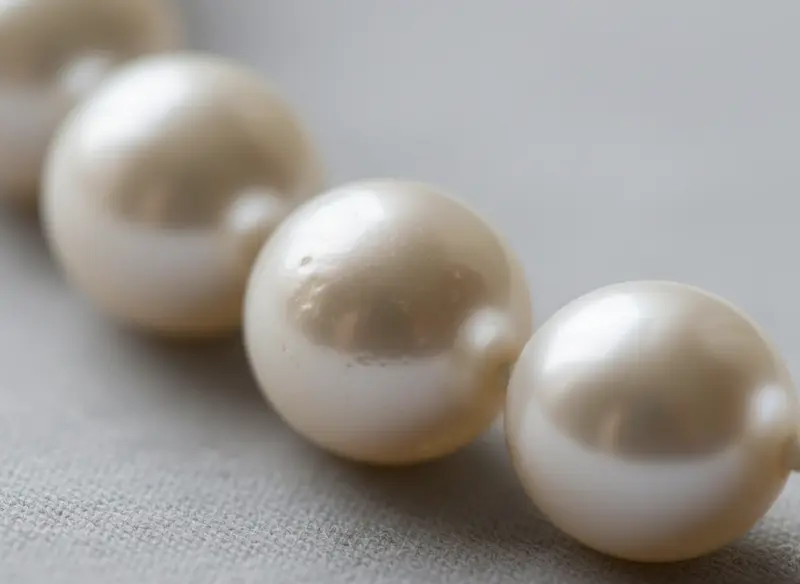
- Real pearls have tiny imperfections – small bumps, slight irregularities, or minor blemishes
- Perfect pearls are usually fake – nature doesn’t create flawless spheres
- Look for subtle variations in shape and surface texture
Tip 5. The Luster Test
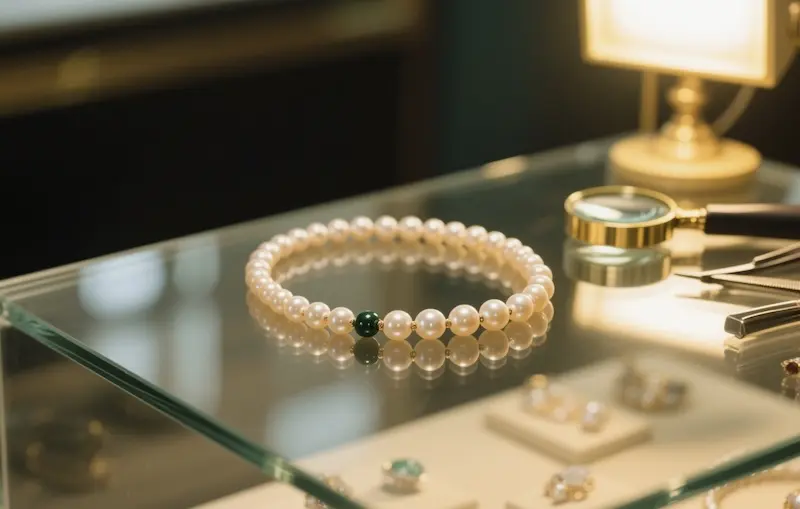
Place the pearl in good light, this is where real pearls truly shine:
- Real pearls reflect light with depth – you should see multiple layers of bouncing light
- Fake pearl light One-dimensional luster
- You should be able to see your own reflection in a good quality real pearl
Tip 6. Colour Consistency
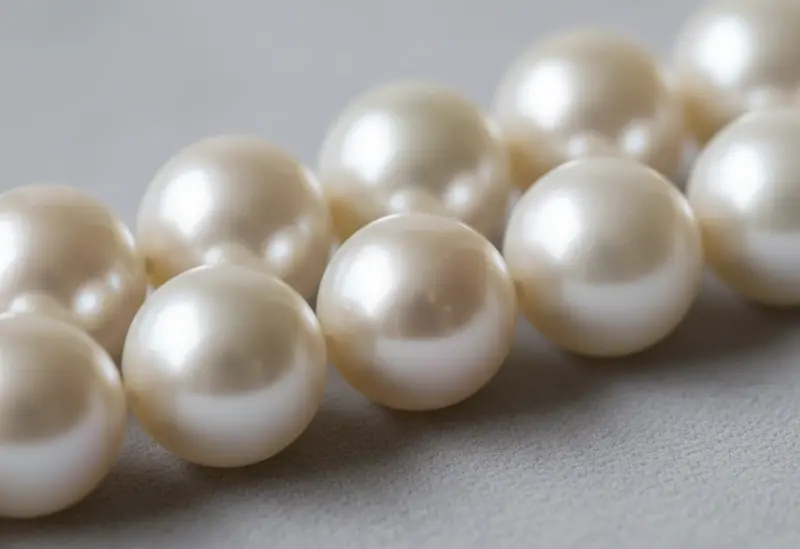
- Real pearls: Subtle colour variations, even within the same strand
- Fake pearls: Often too uniform in colour
- Natural overtones: Real pearls show hints of pink, green, or blue when light hits them
Advanced Tests for Pearl Authentication
Tip 7. The Heat Test
This test requires great care; improper handling may damage the pearls.
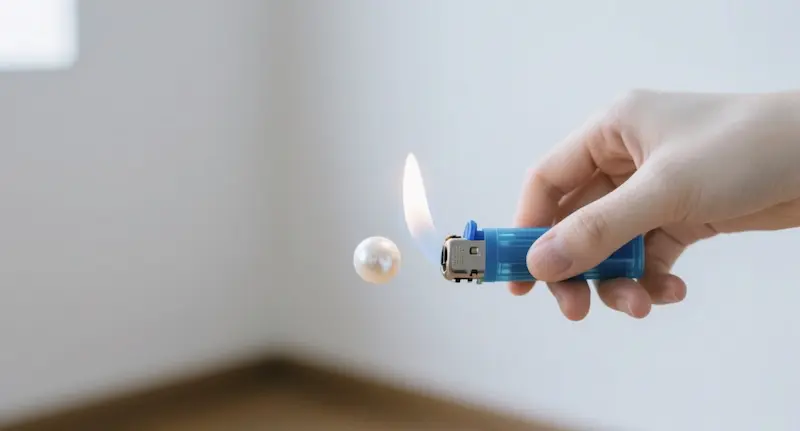
Hold a lighter flame near (not touching) the pearl for a few seconds
- Real pearls: Stay cool and unaffected
- Plastic fake pearls: May melt or show heat damage
- Glass fake pearls: Get hot quickly
Tip 8. The Magnification Test
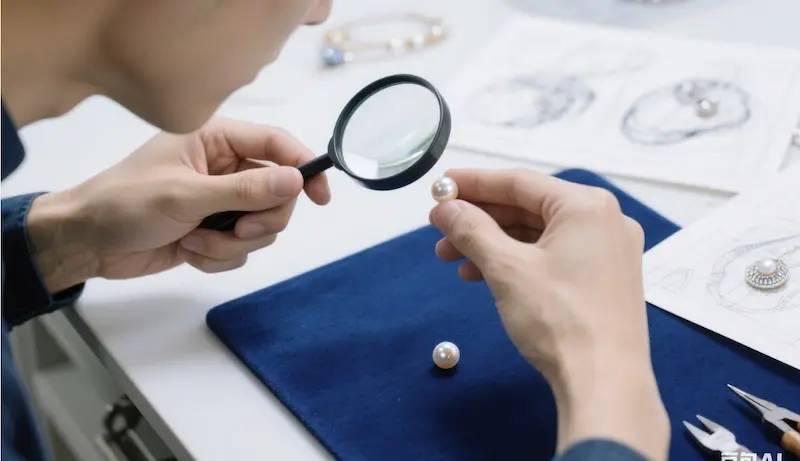
Use a magnifying glass or jewelry loupe::
- Real pearls: Show tiny scale-like patterns (nacre layers)
- Fake pearls: Surface appears too smooth or has obvious signs of artificial processing
Hopefully, with those 8 methods, you’ve figured out How can I tell if pearls are real!
Pearl Types: What You’re Actually Looking At
Natural pearls vs. cultured pearls
Both are real, but there are differences:
- Natural pearls: Formed without human intervention (extremely rare and expensive)
- Cultured pearls: Grown with human help but still real (most pearls on the market are cultured)
- Both are real pearls – cultured pearls do not mean fake pearls
Common Pearl Varieties
- Akoya pearls: Classic white/cream with excellent luster
- Freshwater pearls: Varied shapes and colors, often more affordable and cost-effective
- Tahitian pearls: Dark, exotic color, expensive
- South Sea pearls: Large, luxurious, and expensive
Red Flags: When Pearls Are Definitely Fake
Watch out for these dead giveaways:
- Perfectly round and identical: Nature doesn’t work that way
- No certificate from reputable dealers: Quality pearls come with documentation
- Sold as “shell pearls” or “simulated pearls”: These terms mean fake
- Uniform colouring with no depth: Real pearls have complexity
The Bottom Line: Trust Your Instincts
Here’s what we tell customers at Xinye Pearl: if something feels off, investigate further. Real pearls have character – they’re not perfect, they have weight, and they glow with inner light that’s hard to fake convincingly.
With a combination of tooth testing, visual inspection and common sense, most fake pearls will be easily recognizable. If in doubt, consult a professional.
FAQs
How can I tell if a pearl is real or fake without damaging it?
The tooth test is your best choice, combined with visual inspection of luster, surface imperfections and drilling. These non-damaging methods will help us identify most fakes.
Are cultured pearls considered real?
Absolutely! Cultured pearls are real pearls that have been formed with the help of humans and have the same composition as natural pearls. The only difference is that the initial irritant is intentionally introduced.
What’s the difference between natural and cultured pearl value?
Natural pearls are expensive due to their rarity. Cultured pearls offer the same beauty and wearability as natural pearls at a more affordable price. Both are authentic and valuable.
Can fake pearls pass the tooth test?
Very rarely. Some high-end fake pearls may have a slight roughness to them, but they usually do not have the distinctive gritty texture of real nacre. The tooth test is one of the most reliable methods of quick identification.
How much should I expect to pay for real pearls?
The price of real pearls varies greatly depending on size, quality and type. A strand of freshwater cultured pearls may start at around £50, while high quality Akoya or South Sea pearls can cost thousands of pounds. If the price is ridiculously low, beware.
Do real pearls lose their luster over time?
With proper care, real pearls maintain their lustre for generations. However, exposure to acids, cosmetics, or rough handling can damage the nacre surface. Regular gentle cleaning and proper storage preserve their beauty.
Remember, knowing how to tell if pearls are real gives you confidence whether you’re shopping, inheriting, or simply satisfying your curiosity about that beautiful strand catching the light just so.
Xinye Pearl is able to provide professional pearl wholesale business, such as pearls strands, pearl necklaces, pearl bracelets, etc. If you have this business needs, you can contact us!

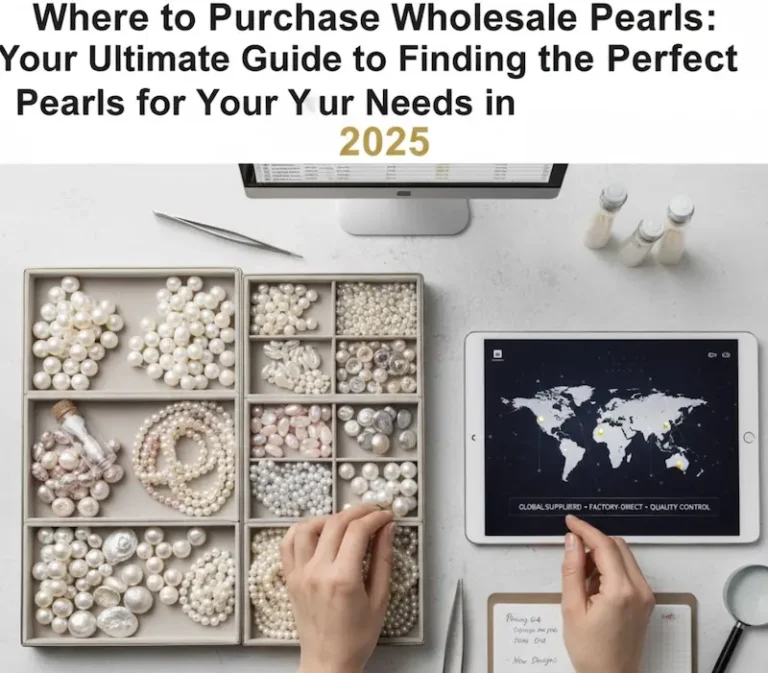
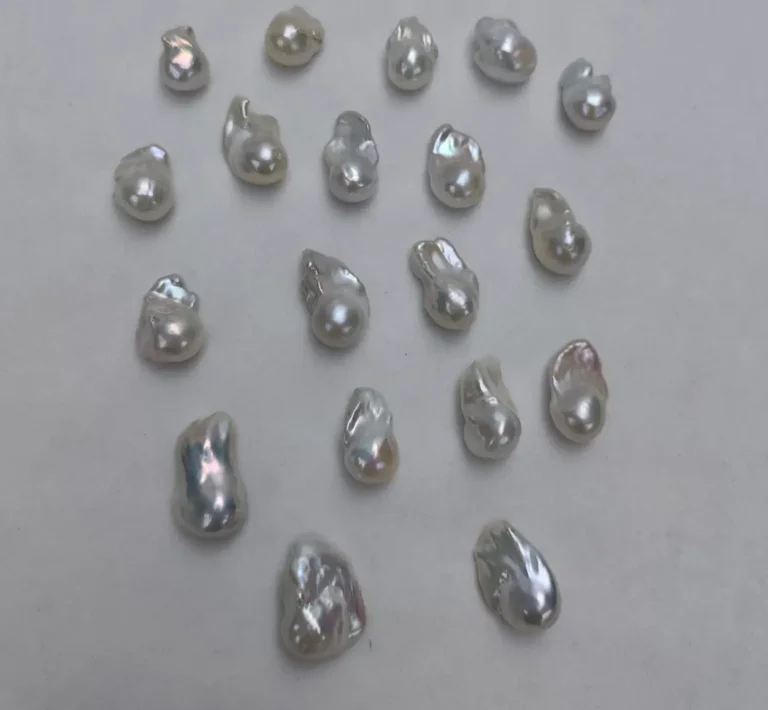

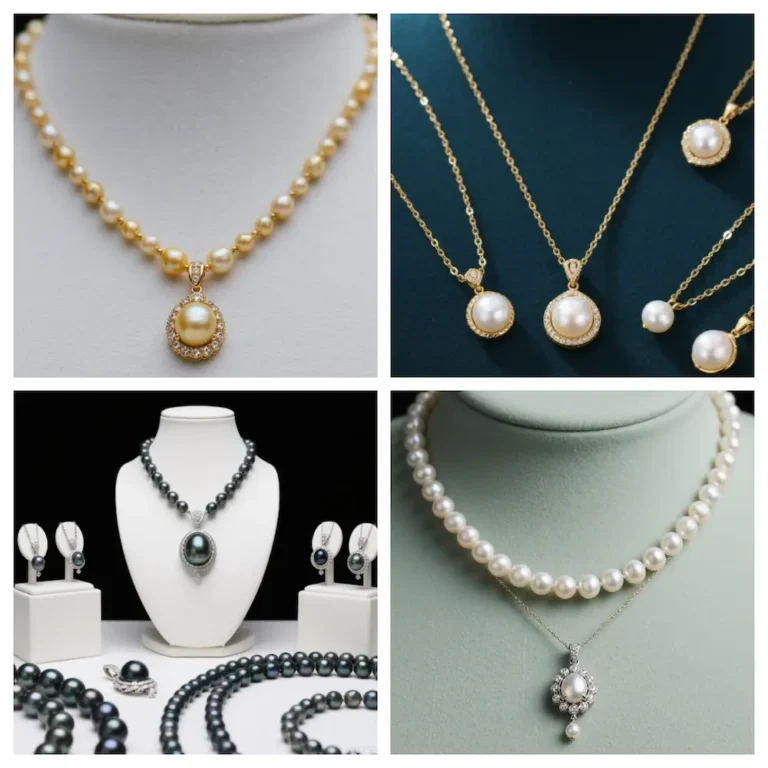
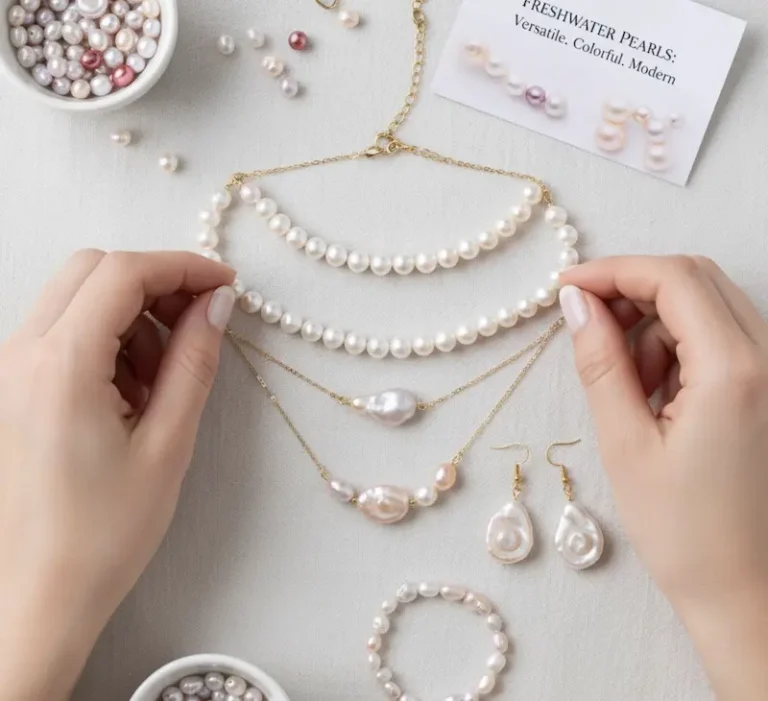

5 Comments